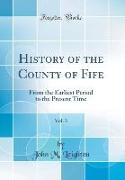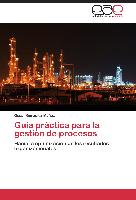History of the County of Fife, Vol. 3
BücherAngebote / Angebote:
Excerpt from History of the County of Fife, Vol. 3: From the Earliest Period to the Present TimeAmong the rocks which overhang the sea near the castle, there were some years ago several caves, which bore marks of being partly artificial, but they are now almost entirely washed away. In the rocks between the castle and the harbour, is a cave called Lady Buchan's, apparently chiefly artificial, which is said to have been elegantly fitted up with shell-work by a lady of that name, when residing at St Andrews about 80 years ago. About a mile to the east of the city, in the face of the cliffs which bound the shore, is Kinkell cave, a natural opening of considerable dimensions. It is about 70 or 80 feet in length, and about 25 broad in the middle. At the west side, it is about 10 or 11 feet in height, but the roof dips so much towards the east, that it terminates with the floor, with which it forms an acute angle.Inland the surface of the parish is finely diversified, rising in some places to hills of moderate height, and again receding into open valleys. In general it is highly cultivated, and in many places ornamented with wood, surrounding the different gentlemen's seats, or planted on ground which would be otherwise waste. The principal eminences in the parish are the hill of Clatto in the western division, which is 548 feet, east Balrymonth 360 feet, and west Balrymonth 375 feet above the level of the sea.II. The ancient name of the district which now constitutes the parish of St Andrews, and also of a considerable portion of the surrounding parishes was Mukross, which has been supposed to mean, in the Celtic, the promontory of the swine.+ The name of "cursus apri" or boar chase, afterwards given to the district, and the village and lands in the parish still called Boarhills, gives probability to the derivation. At an after period, in consequence of the erection of a religious house, where the city of St Andrews now stands, that portion of the boar chase was designated Kilrymond, from Cil-rhi-monadh the cell or church on the king's muir. It was also named Kilrule, the cell or church dedicated to St Regulus. The earliest monkish tradition which has been banded down, with regard to the origin of this religious house, is that Regulus a Greek monk of Patræ, a city in Achaia, who had in keeping the reliques of St Andrew the apostle, warned by a dream, went to sea, about the year 370, in company with some other religious persons, and taking along with them the apostle's remains, proceeded in search of a region towards the west, "in the utmost parts of the world, " to which he had been desired to convey them. Passing through the Mediterranean sea, and coasting along France and Spain, they came at length to the German ocean, where in a severe tempest, they were driven ashore near where St Andrews now stands, and their ship dashed to pieces on the rocks.About the PublisherForgotten Books publishes hundreds of thousands of rare and classic books. Find more at www.forgottenbooks.comThis book is a reproduction of an important historical work. Forgotten Books uses state-of-the-art technology to digitally reconstruct the work, preserving the original format whilst repairing imperfections present in the aged copy. In rare cases, an imperfection in the original, such as a blemish or missing page, may be replicated in our edition. We do, however, repair the vast majority of imperfections successfully, any imperfections that remain are intentionally left to preserve the state of such historical works.
Folgt in ca. 10 Arbeitstagen

